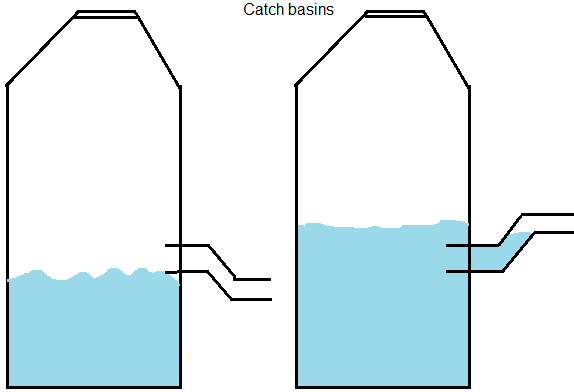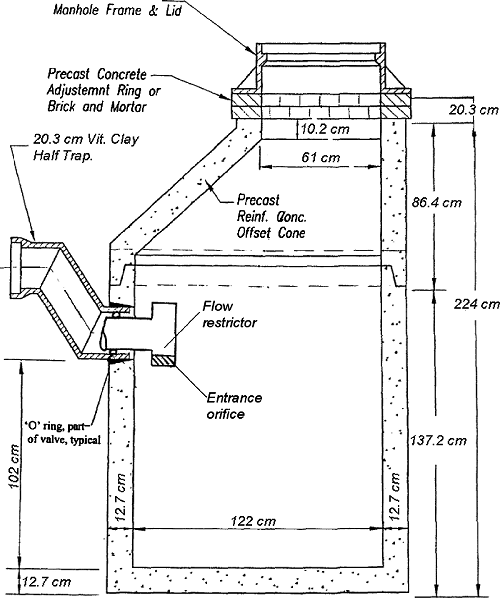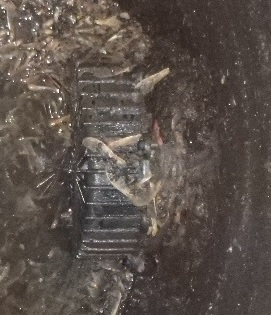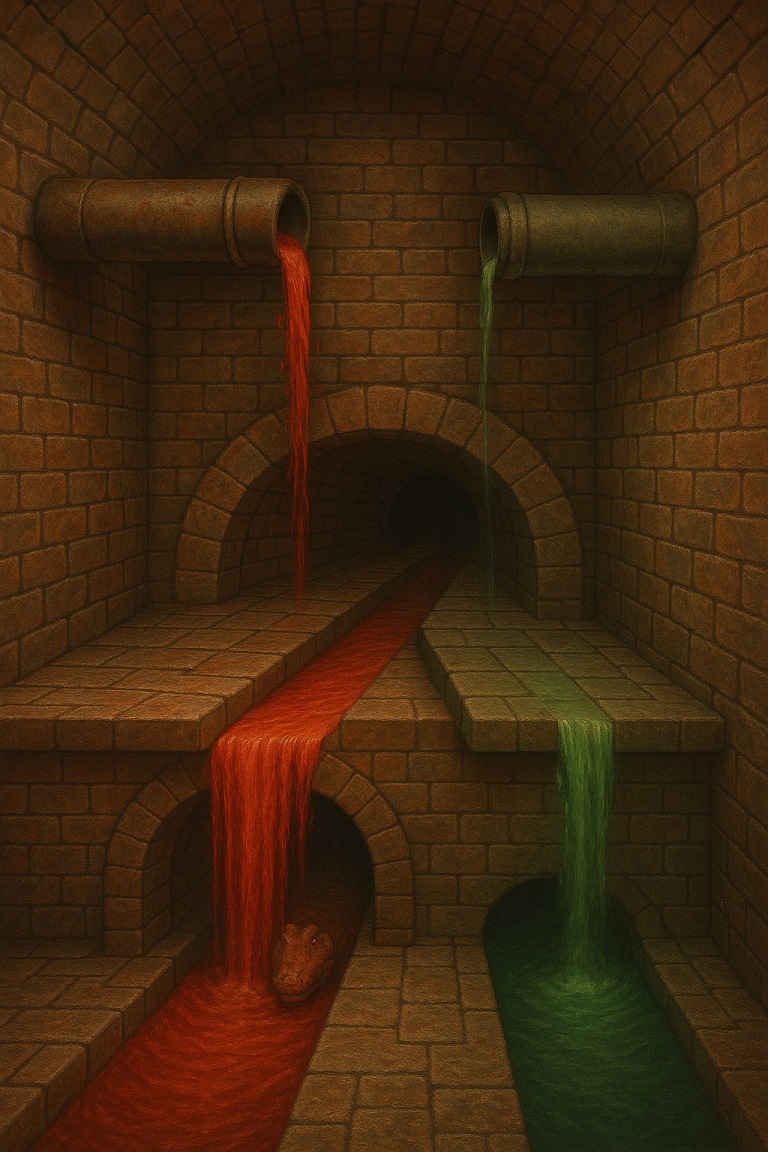
Hydraulics
Sewer hydraulics.
When you have a pipe in the catch basin (curbside sewer), does the pipe that continues to the street sewer, go up, or down?

Depending on the jurisdiction, the traditional approach with a pipe, is left, but when replacing pipes with a vortex restrictor, the new method is now right.
Here's an official map of Chicago's catch basin with a vortex restrictor instead of a pipe.

In the 1990s, the city of Chicago started replacing pipes with vortex restrictors inside catch basins. The original restrictors were plastic and cone-shaped, and the idea was to restrict the water flow to the city sewer system and reclamation district tunnels during heavy rain events, which in turn restricts flooding in basements.
The restrictor is installed in a precast clay half-trap, sealed with O-rings, tightened bolts, and should be snug inside the trap. Importantly, the stormwater manual notes that for dry-bottom basins, if the outlet elevation is lower than the crown of the combined sewer, a check valve must be installed to prevent sewer backflow. If the sewer crown is higher than outlet invert—and no check valve exists—sewage can flood upward into the basin once sewer surcharges.
If your upstream orifice is correctly sized but lacks a check valve, a temporary reverse flow from surcharged sewers during heavy storms could introduce stinking water into the catch basin. Chicago regulations actually require that check valves be installed when the outlet pipe elevation is lower than the sewer’s crown. If yours doesn’t have one, that’s a strong design issue.
Here's what the top of a vortex restrictor looks like, when using a sump pump to remove water down slightly enough to see some of it.

Does mud/soil clog vortex restrictors?
We asked a retired #3 person in Chicago's water department this question. Vortex restrictors after all, don't seem to have much of a hole for stuff to get in. Leaves and tree seeds float on water, so when it floods, removing them is easy. But mud and soil particles sink to the bottom. The employee had this to say:
Leaves, twigs, paper, and plastic debris may float, but when the basin drains, this debris ends up on the bottom of the basin, along with soil/mud. When the basin refills with rain or sewage, most of said debris will be stuck to soil/mud, further clogging the basin. Incidentally, when construction activities take place near basins and workers clean concrete pouring and spreading equipment with water, the resulting concrete/water mixture can harden in the basins and sewer lines, causing real problems.
